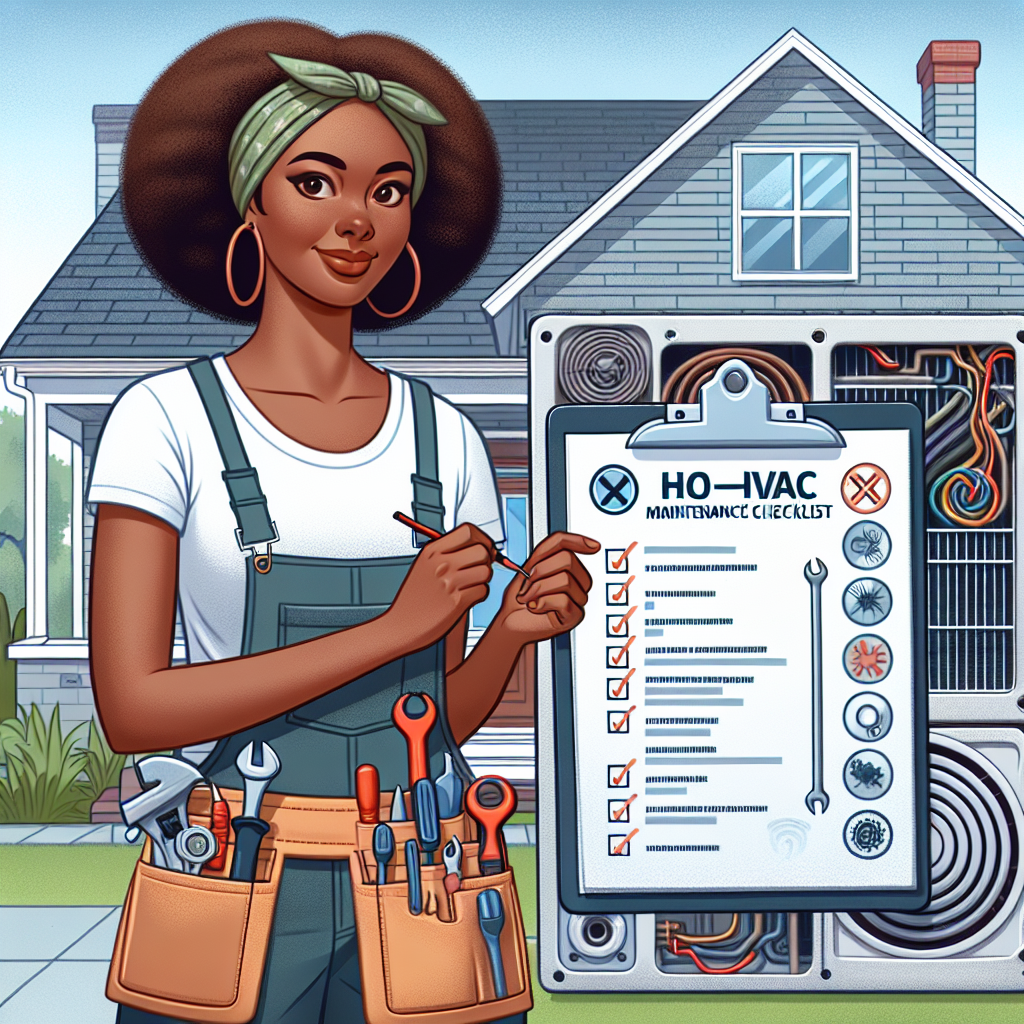As a homeowner, maintaining your HVAC system is crucial for ensuring a comfortable living environment all year round. Regular maintenance not only extends the lifespan of your system but can also enhance energy efficiency and reduce costly repairs. This DIY HVAC maintenance checklist will guide you through essential tasks that you can do yourself, ensuring your home stays cozy and your energy bills remain manageable.
Why Regular HVAC Maintenance Matters
Your HVAC (Heating, Ventilation, and Air Conditioning) system is one of the most vital components of your home. Neglecting it can lead to overloaded systems, increased energy bills, and unexpected breakdowns. Understanding the importance of regular maintenance can save you time and money in the long run.
Enhancing Energy Efficiency
A well-maintained HVAC system operates more efficiently, which translates to lower energy costs and a reduced carbon footprint. This means doing your part for the environment while keeping your wallet happy.
Preventing Costly Repairs
By regularly performing maintenance tasks, you can catch small issues before they spiral into large, costly repairs. This proactive approach maximizes the lifespan of your system and improves reliability.
The Ultimate DIY HVAC Maintenance Checklist
Maintaining your HVAC system doesn’t have to be daunting. Use this checklist to help you stay on track throughout the year:
1. Change the Air Filter Regularly
Frequency: Every 1-3 months
One of the simplest and most important maintenance tasks is changing the air filter. A dirty filter restricts airflow, making your HVAC system work harder. By replacing it regularly, you ensure optimal airflow, improve indoor air quality, and reduce energy costs.
2. Clean the Condenser Coils
Frequency: Twice a year
Over time, dirt and debris can build up on your outdoor condenser coils, reducing efficiency. To clean them:
- Turn off the power to the unit.
- Remove any debris and dirt with a soft brush or cloth.
- Use a gentle stream of water to rinse the coils, avoiding any high-pressure sprays.
3. Inspect Ductwork for Leaks
Frequency: Annually
Leaky ducts can lead to significant energy loss. Inspect your ductwork for visible gaps and seals. Use mastic sealant or duct tape to seal any leaks you find to keep conditioned air from escaping.
4. Test Thermostat Functionality
Frequency: At the start of the heating and cooling seasons
Ensure your thermostat is functioning correctly to maintain desired temperatures. If you have a programmable thermostat, double-check its settings to optimize energy savings.
5. Clean the Indoor Unit
Frequency: Annually
Dust can accumulate inside your HVAC unit, leading to inefficiency. Carefully clean the air blower and inside surfaces with a soft brush or vacuum. Remember to turn off the power before cleaning!
6. Inspect and Clean Drains
Frequency: Every 3 months
Check the condensate drain for clogs that can lead to leaks. A simple mixture of vinegar and water can be poured down the drain line to prevent buildup.
7. Check Insulation Levels
Frequency: Annually
Good insulation keeps your home comfortable and reduces energy costs. Inspect insulation around ducts and in attics and crawl spaces. If it’s worn out or insufficient, consider adding more.
8. Schedule Professional Maintenance
Frequency: Once a year
While this checklist covers many DIY tasks, it’s also essential to schedule a professional inspection and tune-up at least once a year. A certified technician can identify and address issues that may not be apparent to the untrained eye.
Season-Specific HVAC Maintenance Tips
To maximize efficiency, it’s helpful to approach your HVAC maintenance with seasonal changes in mind. Here are a few additional tasks to add to your checklist depending on the season:
Spring:
- Clean and prepare the outdoor unit for summer use.
- Check refrigerant levels and ensure a professional inspects them if low.
Summer:
- Keep the area around the outdoor unit clear of debris.
- Adjust the thermostat settings when away from home to save energy.
Fall:
- Inspect and clean the furnace; replace any dirty filters.
- Check carbon monoxide detectors to ensure they’re in working order.
Winter:
- Ensure warm air vents are clear of obstructions.
- Consider investing in a humidifier to maintain comfortable humidity levels.
Final Thoughts
Maintaining your HVAC system doesn’t have to be overwhelming. By following this comprehensive DIY HVAC maintenance checklist, you can keep your home comfortable and avoid unexpected repair costs. Furthermore, regular upkeep will promote energy efficiency and improve indoor air quality for your family. Remember, when in doubt, don’t hesitate to reach out to a professional. Happy DIYing!


